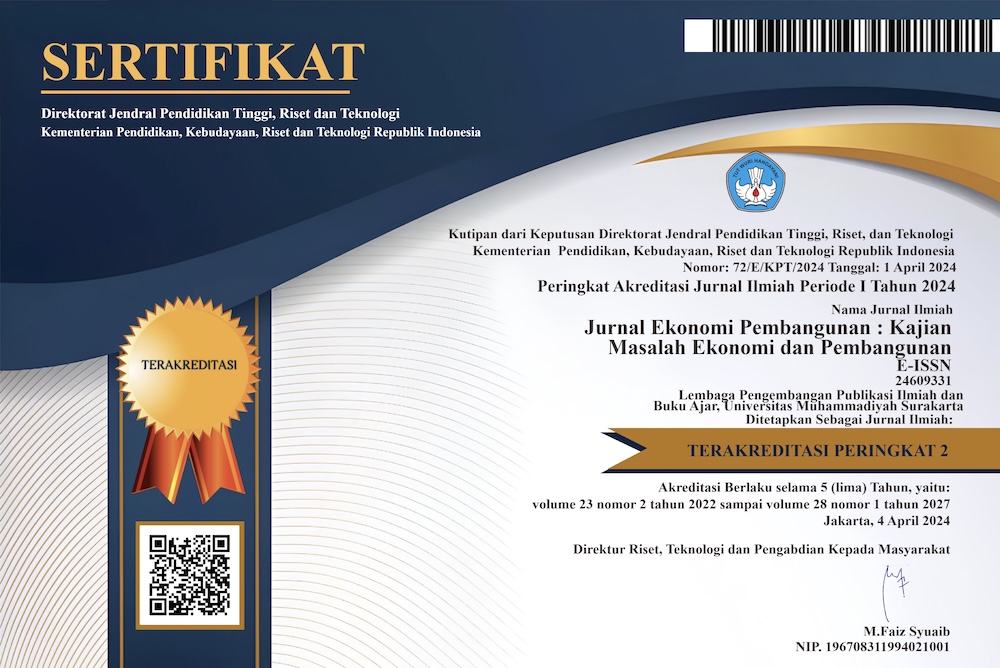Linkages between Dynamic Financial Inclusion and Institutions in ASEAN 8
DOI:
https://doi.org/10.23917/jep.v21i2.11146Keywords:
Financial inclusion, institutions, dynamic panel dataAbstract
Financial inclusion becomes a priority concern with governments in ASEAN countries such as reduce the lack of access for public to formal financial institutions. Moreover, there is an empirical gap of linkages between institutions and financial inclusion. Thus, the study aims to estimate the effect of institutions on dynamic financial inclusion. Three financial inclusion indicators are employed, namely: debit card ownership, credit card ownership, and domestic credit to GDP ratio. Institutional indicators consist of six indicators following world governance indicators. The research observations are about 88 consisting of cross-sections were eight of ASEAN countries and the time series was 2008-2018. Indeed, a dynamic panel data was employed. In general, the findings exhibit that FEM is the appropriate model under Hausman test. Specifically, debit card ownership and credit card ownership were determined by voice and accountability, and rule of law while domestic credit to GDP ratio was determined by some indicators of institutions such as voice and accountability, political stability, regulatory quality, and control of corruption. Hence, the policy implications were directed to improve the quality of institutions both country and ASEAN levels. The high quality of institutions will stimulate the acceleration and expansion of financial inclusion in ASEAN countries.















